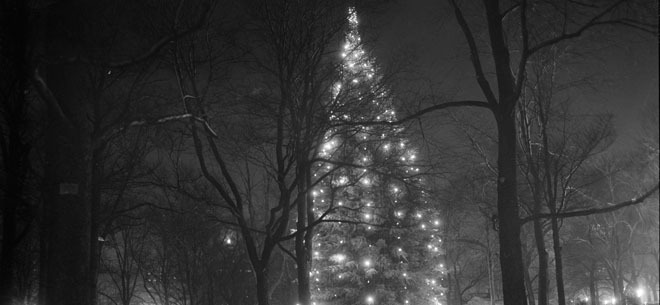
Heartwarming holiday tales don’t often begin with tragic explosions, but in the instance of how the official City of Boston Christmas tree came to us from Nova Scotia, that is exactly the case.
The story began during the days of World War I in Halifax, Nova Scotia. The city had become an important point of departure for both men and supplies for the war effort in Europe. On the morning of December 6, 1917, a damaged ship full of munitions meant for France caught on fire, drifted into a pier and then erupted in the harbor. It was the largest man-made explosion known up to that time. Nearly 2,000 people were killed and 9,000 injured by the blast and the resultant tidal wave.
Authorities in Boston heard the news of the disaster almost immediately via telegraph and organized a relief effort to send food, water, medical supplies and medical personnel to help the survivors. A train arrived on the morning of December 8, providing important aid to beleaguered emergency workers.
In recognition and thanks to Boston for being one of the first cities to respond, Nova Scotia sent a Christmas tree to the Hub in 1918. This practice was revived in 1971 and has continued every year since under the supervision of exacting standards set by the Nova Scotia Department of Natural Resources—the tree must be a healthy, attractive balsam fir, white spruce or red spruce that can range from 40 to 50 feet tall and have good color, density and uniformity.
This year, the 43rd anniversary of that tradition, saw the installation of a 43-foot white spruce near the Boston Common Visitors Center at 139 Tremont St., which arrived by police escort on November 21. The 73rd annual City of Boston tree lighting ceremony took place on December 4 with dignitaries from Boston and Nova Scotia in attendance. The tree remains on display, lights and all, through January 6.


